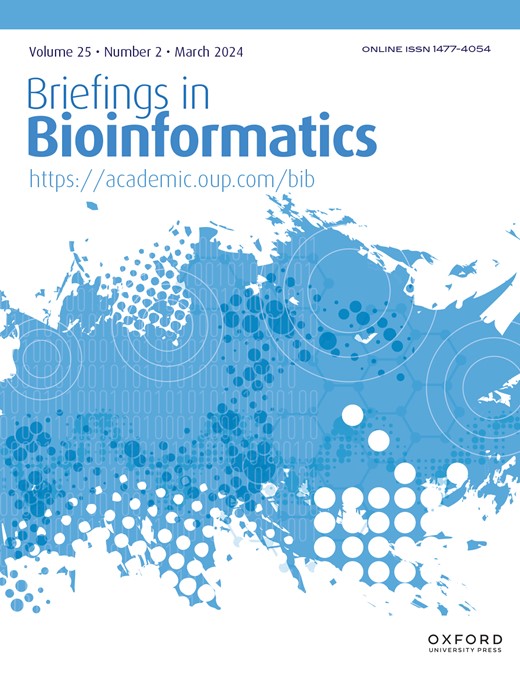数据库中 m6A 的可变调用及相关特征:终端用户指南。
IF 6.8
2区 生物学
Q1 BIOCHEMICAL RESEARCH METHODS
引用次数: 0
摘要
N6-甲基腺苷(m$^{6}$A)是一种被广泛研究的信使 RNA 甲基化,它与多种细胞过程和人类疾病有关。为了方便快速、轻松地挖掘与细胞特异性表型相关的m$^{6}$A特征,人们创建了许多整理不同细胞类型m$^{6}$A特征的数据库。然而,这些数据库包含的内在复杂性尚未得到明确报道,这可能会导致不了解这些复杂性的最终用户对m$^{6}$A相关生物学特性的识别和解释不准确。在此,我们回顾了各种与m$^{6}$A相关的数据库,并强调了几个关键问题。特别是,不同数据库在峰值调用管道上的差异导致了峰值数量和坐标上的巨大差异,而且只有适度的可重复性,纳入早期 m$^{6}$A 测序方案的峰值调用可能会导致假阳性或假阴性的报告。对这些问题的认识将有助于最终用户避免在研究中纳入可能不可靠的数据,并更好地利用 m$^{6}$A 数据库得出有生物学意义的结果。本文章由计算机程序翻译,如有差异,请以英文原文为准。
Variable calling of m6A and associated features in databases: a guide for end-users.
N6-methyladenosine (m$^{6}$A) is a widely-studied methylation to messenger RNAs, which has been linked to diverse cellular processes and human diseases. Numerous databases that collate m$^{6}$A profiles of distinct cell types have been created to facilitate quick and easy mining of m$^{6}$A signatures associated with cell-specific phenotypes. However, these databases contain inherent complexities that have not been explicitly reported, which may lead to inaccurate identification and interpretation of m$^{6}$A-associated biology by end-users who are unaware of them. Here, we review various m$^{6}$A-related databases, and highlight several critical matters. In particular, differences in peak-calling pipelines across databases drive substantial variability in both peak number and coordinates with only moderate reproducibility, and the inclusion of peak calls from early m$^{6}$A sequencing protocols may lead to the reporting of false positives or negatives. The awareness of these matters will help end-users avoid the inclusion of potentially unreliable data in their studies and better utilize m$^{6}$A databases to derive biologically meaningful results.
求助全文
通过发布文献求助,成功后即可免费获取论文全文。
去求助
来源期刊

Briefings in bioinformatics
生物-生化研究方法
CiteScore
13.20
自引率
13.70%
发文量
549
审稿时长
6 months
期刊介绍:
Briefings in Bioinformatics is an international journal serving as a platform for researchers and educators in the life sciences. It also appeals to mathematicians, statisticians, and computer scientists applying their expertise to biological challenges. The journal focuses on reviews tailored for users of databases and analytical tools in contemporary genetics, molecular and systems biology. It stands out by offering practical assistance and guidance to non-specialists in computerized methodologies. Covering a wide range from introductory concepts to specific protocols and analyses, the papers address bacterial, plant, fungal, animal, and human data.
The journal's detailed subject areas include genetic studies of phenotypes and genotypes, mapping, DNA sequencing, expression profiling, gene expression studies, microarrays, alignment methods, protein profiles and HMMs, lipids, metabolic and signaling pathways, structure determination and function prediction, phylogenetic studies, and education and training.
 求助内容:
求助内容: 应助结果提醒方式:
应助结果提醒方式:


